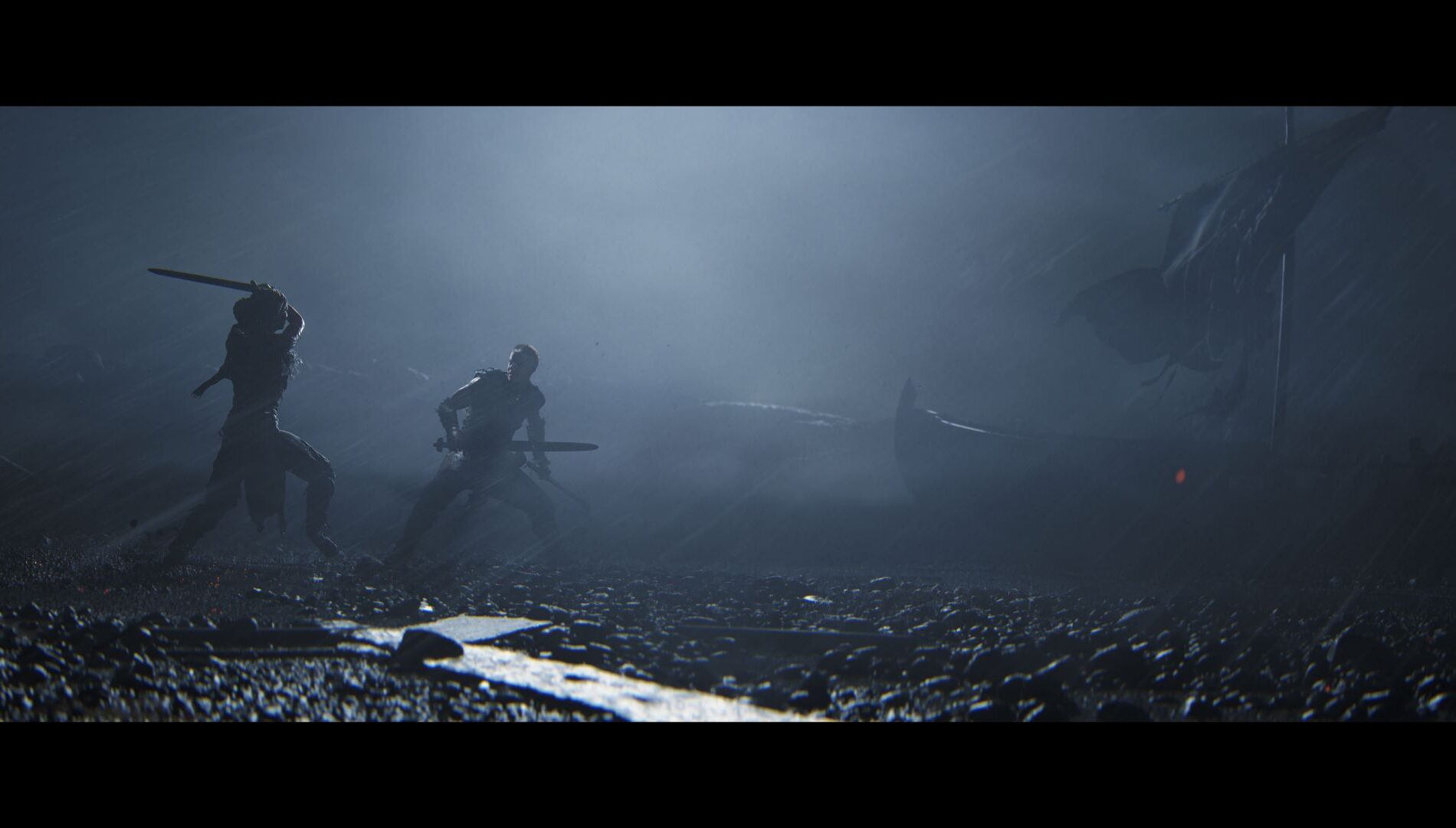Senua’s Saga: Hellblade II – How Performance Capture and Stunts Created Next-Level Combat
2017’s Hellblade: Senua’s Sacrifice was an exceedingly special game. A bold, brash direction for Ninja Theory, the decision to craft a short, narrative experience revolving around mental health was a brave leap, but one that ultimately paid off. Now, seven years later, the studio is gearing up to reveal a sequel to Senua’s story, built with the same love and care, but expanding on the debut in every conceivable way.
In the run up to launch, we’ll be bringing you the story of Senua’s Saga: Hellblade II from inside the studio itself, as well as stories and lessons from Hellblade’s creative leads. This is Ninja Theory’s ultimate form, filled with industry-leading talent, groundbreaking technology, and one of the most unique approaches to game development you’ve ever seen to fulfil the ultimate goal – the pursuit of true immersion.
Motion capture has been part of Ninja Theory’s heritage for a long time, and for good reason. The studio established itself as a pioneer in performance capture for games with 2007’s Heavenly Sword and has continued to innovate since. Now, with greater access to state-of-the-art technology – including its very own performance capture studio nestled within the walls of its Cambridge HQ – Ninja Theory is once again primed to break its own barriers within Senua’s Saga: Hellblade II.
Ninja Theory utilised performance capture in the first Hellblade for its cinematic moments, but in Hellblade II, almost every in-game movement is performed by real-world actors and scanned in, to ensure the most realistic, human experience possible in-game. According to Studio Head Dom Matthews, capture for the combat sequences alone took almost 70 full days to complete.
“We see performance capture as a tool to deliver character performance in the purest way possible,” Matthews says. “We took that opportunity because it ties into our goal of doing everything we can to achieve immersion and keep it.”
You’ll never feel that more than in Hellblade II’s unique approach to combat – which stands simultaneously as a testament to Ninja Theory’s deep belief in their way of doing things, but also as a brand-new experiment for the restlessly creative studio.
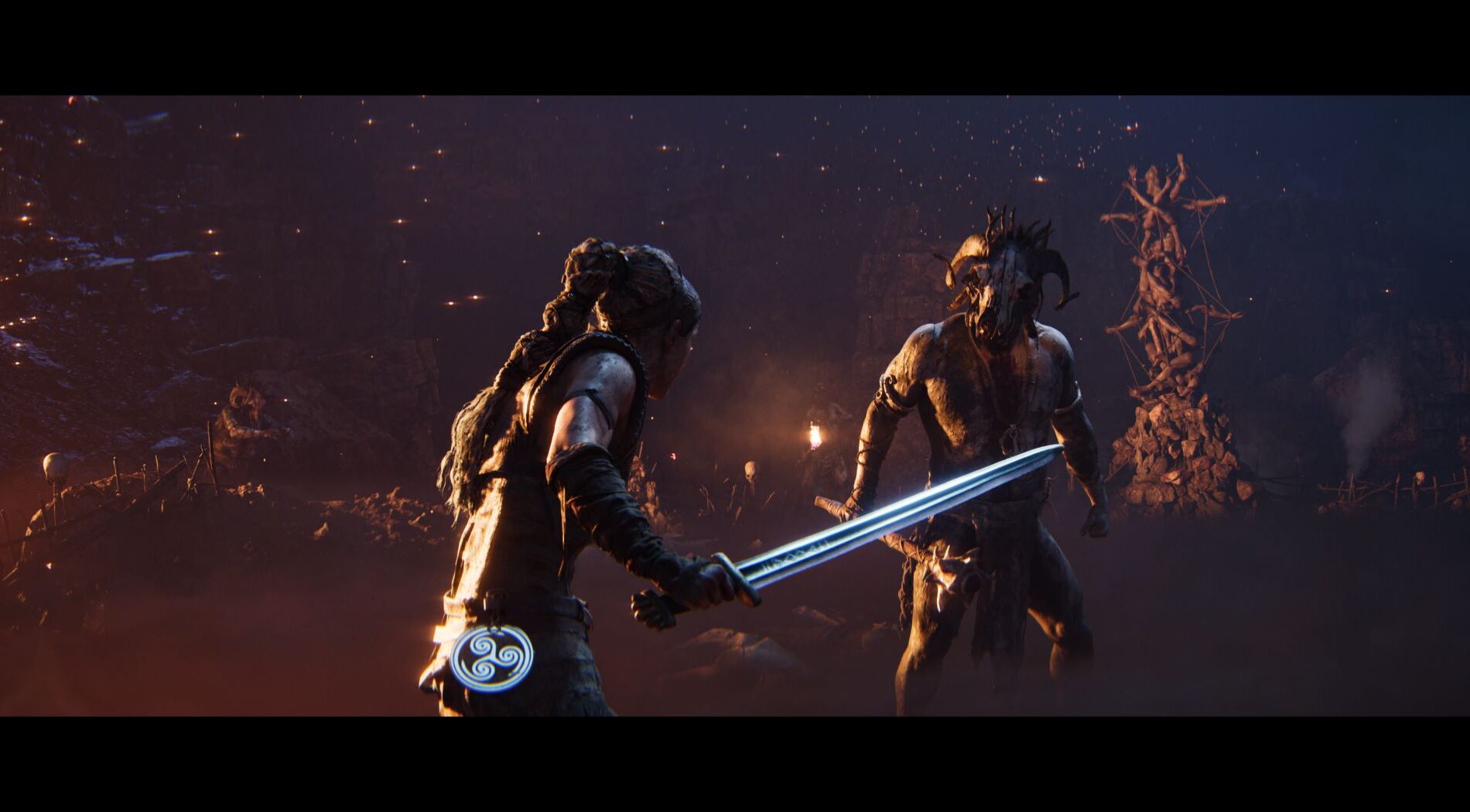
Combat, Evolved
Combat in Hellblade II is a vast improvement on the first title, but, fascinatingly, this is not a traditional action game in practice. You won’t be bashing and slashing through endless hordes in Hellblade II – every fight you’ll enter as Senua is calculated and intentional, every swing, punch and grapple is crafted to align you with her struggle, and her growth as she overcomes these hurdles. Every foe feels like the one that might finally finish you and Senua off, and walking away intact feels like a triumph every time.
“Instead of taking what we’ve got and adding to it, we looked how we could go deeper on the thing we really care about, which is making combat meaningful to the narrative,” Matthews says.
During my visit to Ninja Theory, I was shown this evolution in combat from multiple perspectives – a look at how the combat scenes were performed and captured by actors, a behind-the-scenes glimpse at some of these movements in their development stages inside Unreal Engine 5, and then of course, the finished gameplay itself, which showcases the end product of this fantastic and thoughtful work.
In one section, the chapter culminates in Senua facing off an onslaught of masked enemies, some with heavy builds primed to knock her down, and some with swift fire attacks that require well-timed dodging. Each fight – all handled one-on-one, but with new enemies barrelling in from off-screen to keep the frantic feeling alive – feels like survival by the skin of your teeth, and the sum of Senua’s power is funnelled through her retaliations; the movements to take down these foes are almost rhythmic, a desperate beating heart powering the game along.
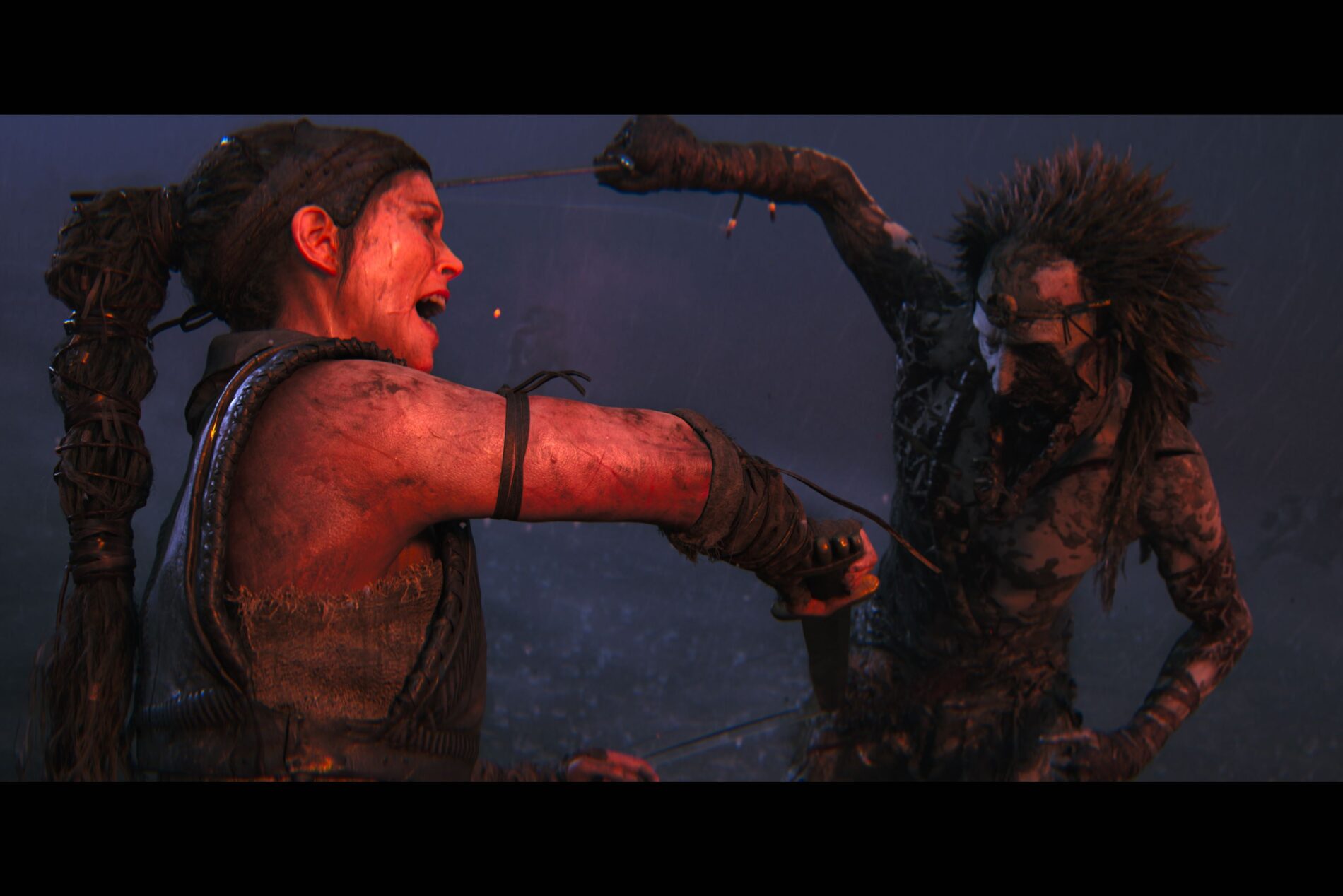
It’s hard to explain unless you’ve played yourself, but this doesn’t feel like traditional video game combat. There’s a weight to it, both from Senua and her enemies, that turns this into more of a desperate dance than a piece of superpowered pugilism. It makes for exhausting, exhilarating sequences, producing the feeling of an intense boss rush, even against what would otherwise be regular enemies.
“We wanted to bring a sense of brutality and struggle to one-on-one combat,” says Benoit Macon, combat director on Hellblade II. “There is a sense of connection between the combat and the narrative.”
That brutality is felt even more keenly when you seeing it being carried out in real life. I watch two Lucky13 stunt performers act out multiple combat sequences, one taking on the role of Senua, and another acting as a hulking Northman. The two performers swing rapidly at each other, with one take culminating in a violent body slam. This is a real, tangible portrayal of a fight; the movements and body language – while expertly directed – are unpredictable, and differ slightly between takes, granting an authenticity that is seldom offered by wholly calculated digital character rigging.
The scene is also heavily cinematic; a mass brawl breaking out between these masked Viking slavers and their newly freed captives onscreen means it’s never entirely clear who Senua is about to square up against next (and indeed, if you die, you’ll take on enemies in a different order, the fights shifting to stop you simply pattern-learning). Macon cites Games of Thrones’ famous ‘Battle of the Bastards’ episode as an early reference point for this sequence, highlighting the relentless, indiscriminate violence that Jon Snow faces in what seems to be a losing battle against endless foes. Similarly, Senua is not trying to be a hero in this chapter, merely fighting to survive – and you’re right there with her.
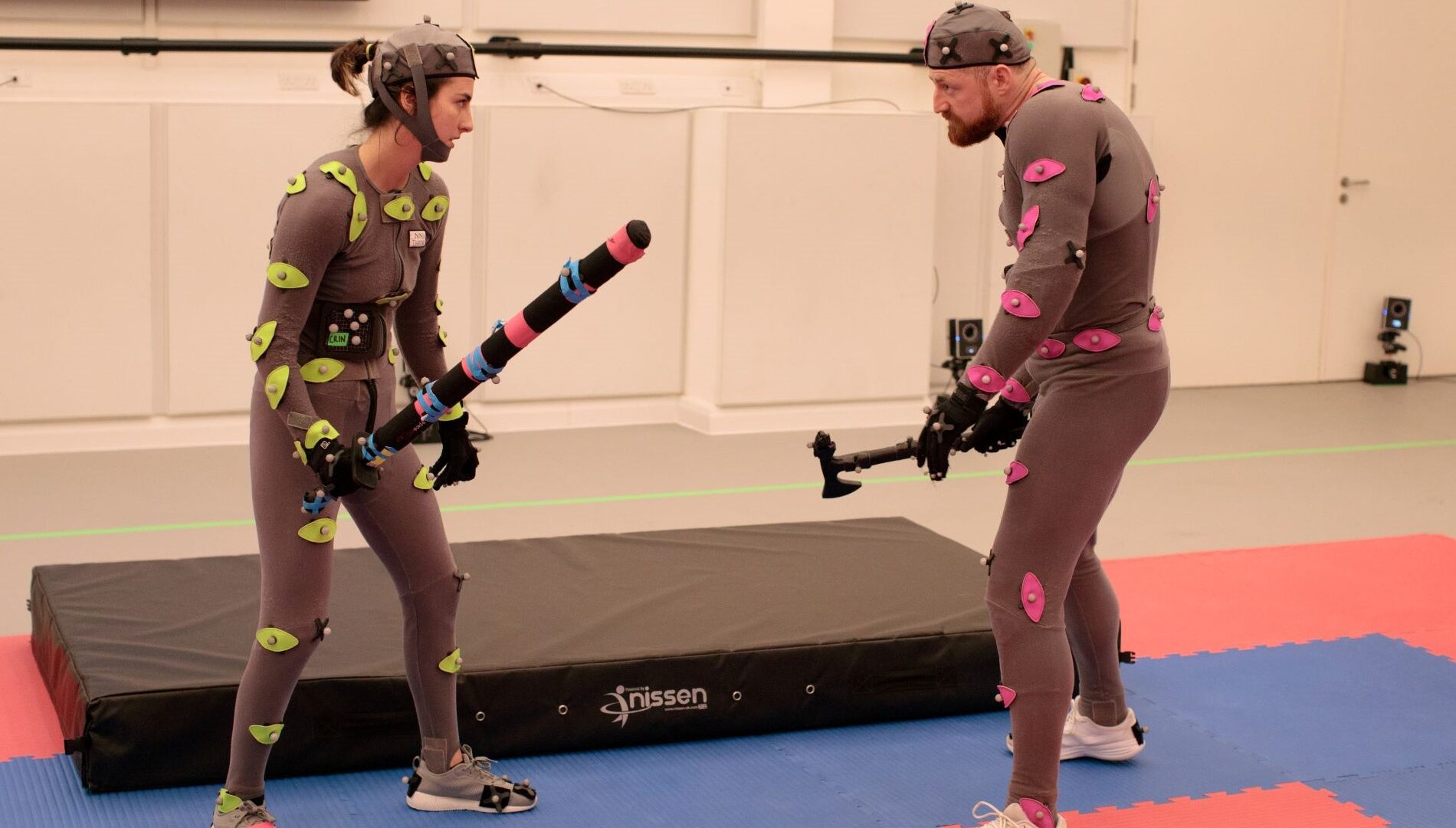
Bringing Senua to Life
Paradoxically, while I play, I realise that part of the genius of Ninja Theory’s work on combat is the effort they’ve put into the moments where you’re not fighting, and how they link together. Even when Senua’s sword is sheathed, moments of exploration, puzzle solving and conversations with other characters are rooted in a deep sense of dynamic realism – and crucially this means the game feels like a seamless whole. You don’t walk into a blank arena and realize, “Oh, this is a combat sequence.” The wholeness means that, even in its quiet moments, it feels as though you could enter combat at any moment.
Even Senua’s most incidental movements feel intensely authentic – as she’s carefully padding through abandoned villages or trepidatiously navigating around terrifying enemies, I often found myself mirroring her reactions. If Senua’s shoulders are tense, mine are similarly braced; if Senua is making herself smaller to not be detected, I’m also hunching into myself as though the masked nightmares are going to see me through the screen. This is all brought to life by Senua actress Melina Juergens’ astronomical efforts to create a living, breathing character that is now an extension of her.
“The benefit of working with actors like [Juergens] or any of the other cast is that we can bring them in to try different ideas; a scared walk, for example,” Matthews says. “We ask ourselves what you’d be feeling in that moment, and how do we convey that to the player? We can then capture it, and the end result in the game is based on a real performance.”
Juergens tells me that even aspects like the weather are considered – how will Senua move and behave if it’s raining heavily or there’s strong winds? There’re even scenes with multiple versions of the same dialogue between Senua and other characters, and the line that is delivered will depend on whether Senua is walking or running. It’s this constant reactivity not just to NPCs, but also to the dynamic world around here, that means you’re completely immersed in her world.
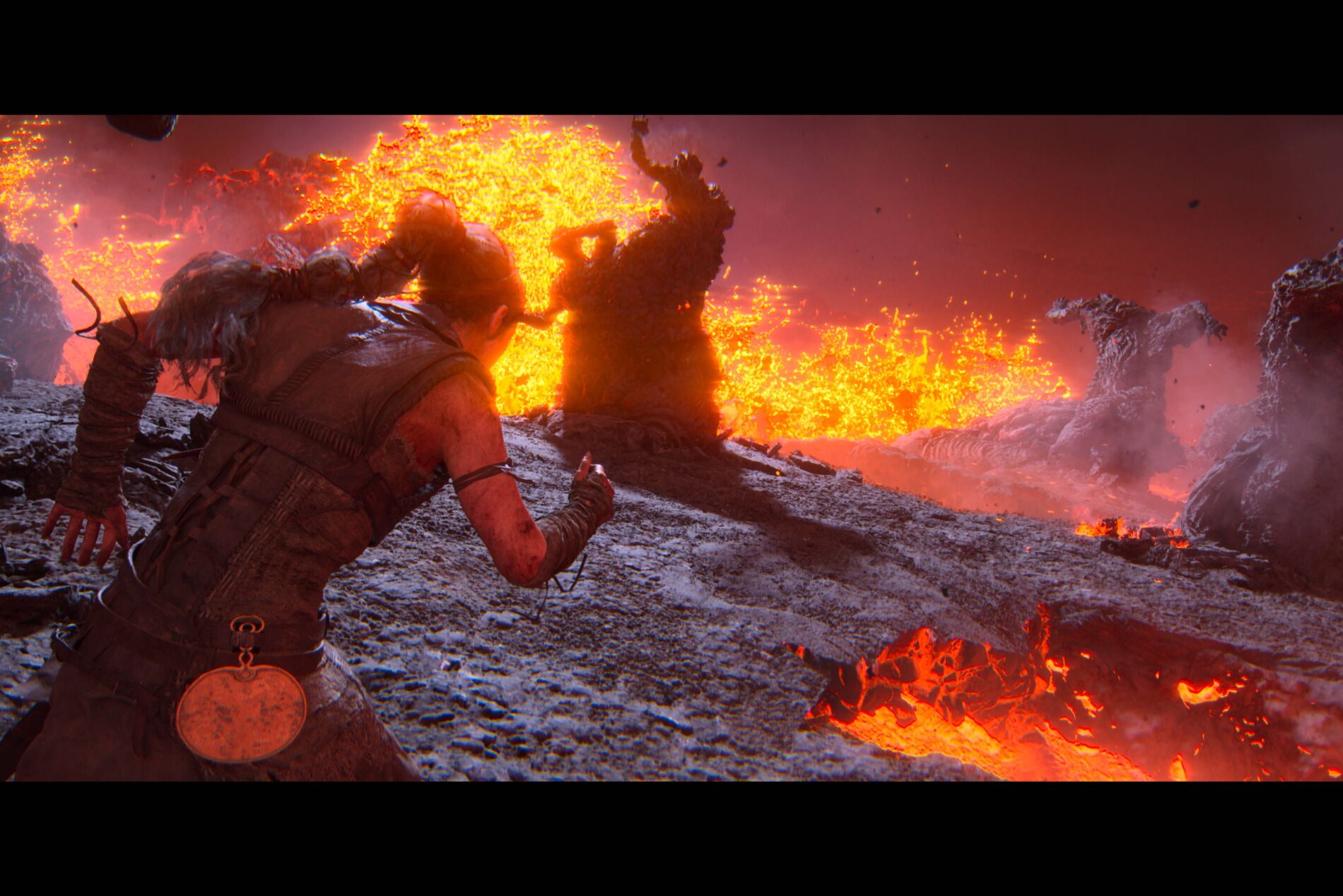
Some of the Ninja Theory team are even now trained in how to safely build scaffolding, due to its consistent use throughout the filming process to simulate climbing and suspension scenes, an incredible commitment to the craft.
In some instances, Juergens will film physical movements first, and then record the facial expressions later to make for an even more realistic and animated approach. In other scenarios, actions and expressions are filmed in tandem, as Juergens is acting out the scene. She describes one instance of shimmying through a set piece with an iPhone camera strapped to her head to capture her face as she goes – which is all I could think about when later playing through a similar segment in the game itself.
The result is something that feels differently pitched to most action games. We aren’t just driving Senua from one battle to the next, nor do those fights feel like interruptions to the wider story – combat is a part of Senua’s journey, and the intense work put into making her feel like a real person, both in and out of those fights means we, as players, are left in a state of blissful unease. The next fight could come at any moment.
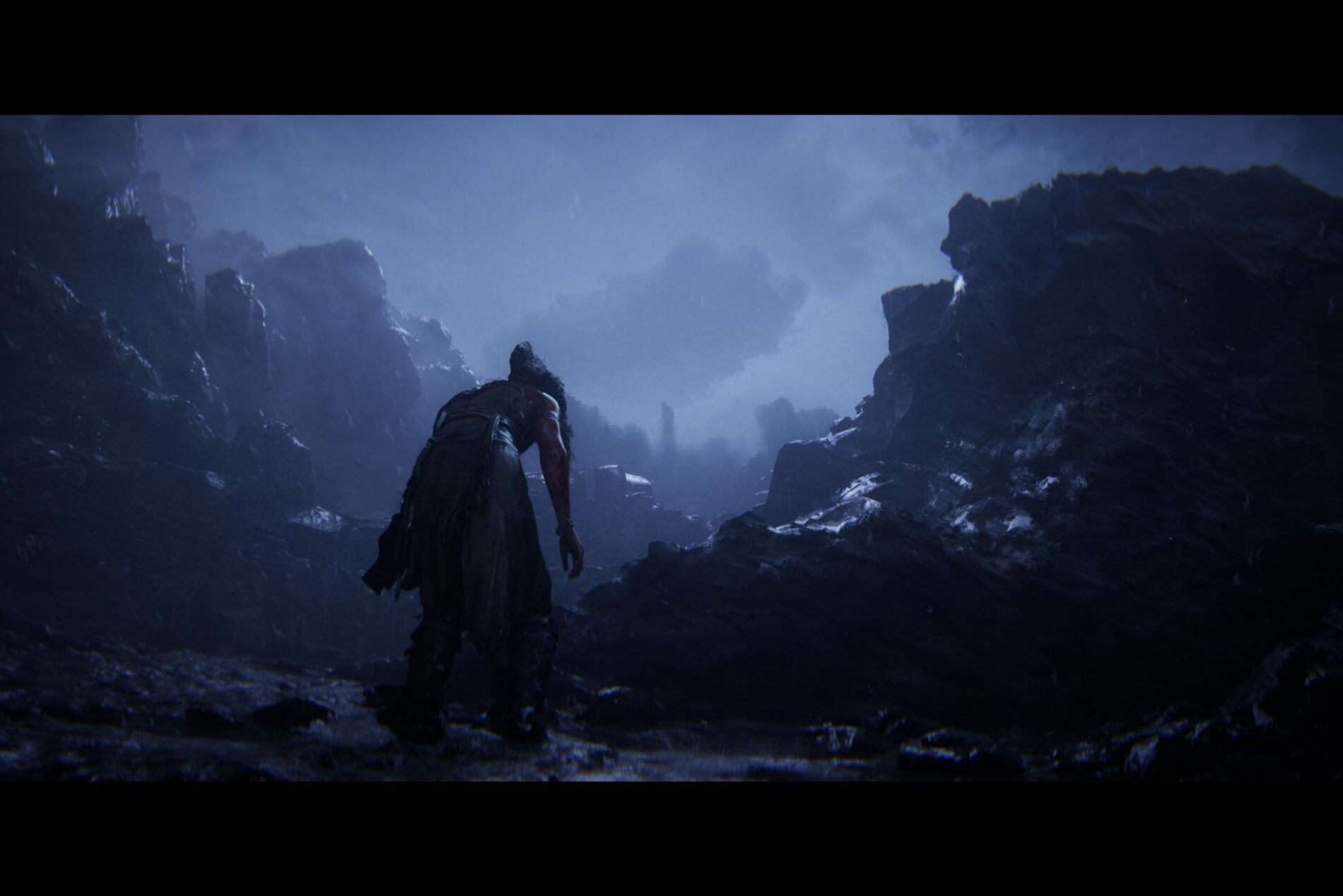
Fighting With Purpose
All of this work – the stunt work, meticulous acting capture, and new mechanical ideas of how to present a fight – feel as much like a Hollywood production as they do a traditional game. Ninja Theory is aware of the appetite for sprawling, lengthy AAA blockbusters, and we’re increasingly familiar with the Hollywood techniques they employ. However, Matthews prefers to liken Hellblade II to a quality independent film, and tells me that the confidence to keep creating mindful art has only been reinforced by the success and resonance of Hellblade: Senua’s Sacrifice. In terms of combat, that means creating a system that doesn’t just feel good to play, but serves the wider message. Senua isn’t mindlessly engaging in battle – she has to do this to meet her goals, and that’s reflected in how Ninja Theory has approached every aspect of putting a character onscreen.
“That mindset has encouraged me and the people in the team to continue to be brave in our creative work, to continue to doggedly pursue the things we all personally care about,” Matthews says.
It makes Hellblade II’s combat less a cog in a gaming machine, and more of a brushstroke in the wider piece of art Ninja Theory is presenting. The studio is fuelled by a fearlessness to keep innovating on Senua’s journey in its own thoughtful, meticulous way – yes, this feels very fun to play, but fighting means something in this game. That might be an achievement in itself.
Senua’s Saga: Hellblade II will be released on May 21, 2024 for Xbox Series X|S, Windows PC, Steam and Cloud – and will be available with Xbox Game Pass and PC Game Pass day one.
The post Senua’s Saga: Hellblade II – How Performance Capture and Stunts Created Next-Level Combat appeared first on Xbox Wire.
Source: Xbox Blog
—
